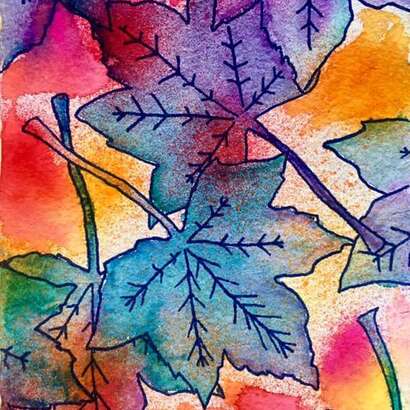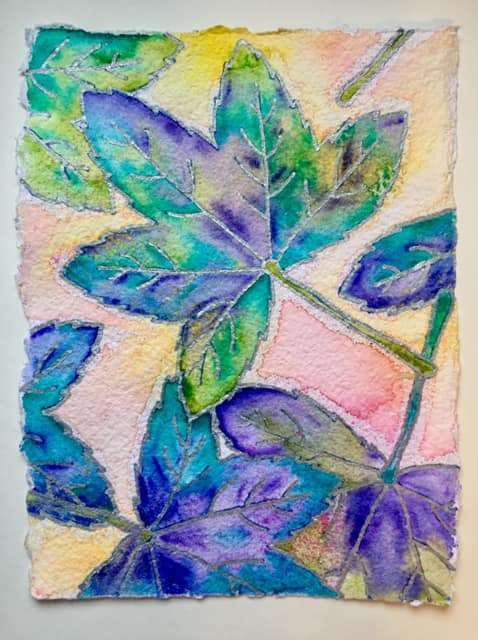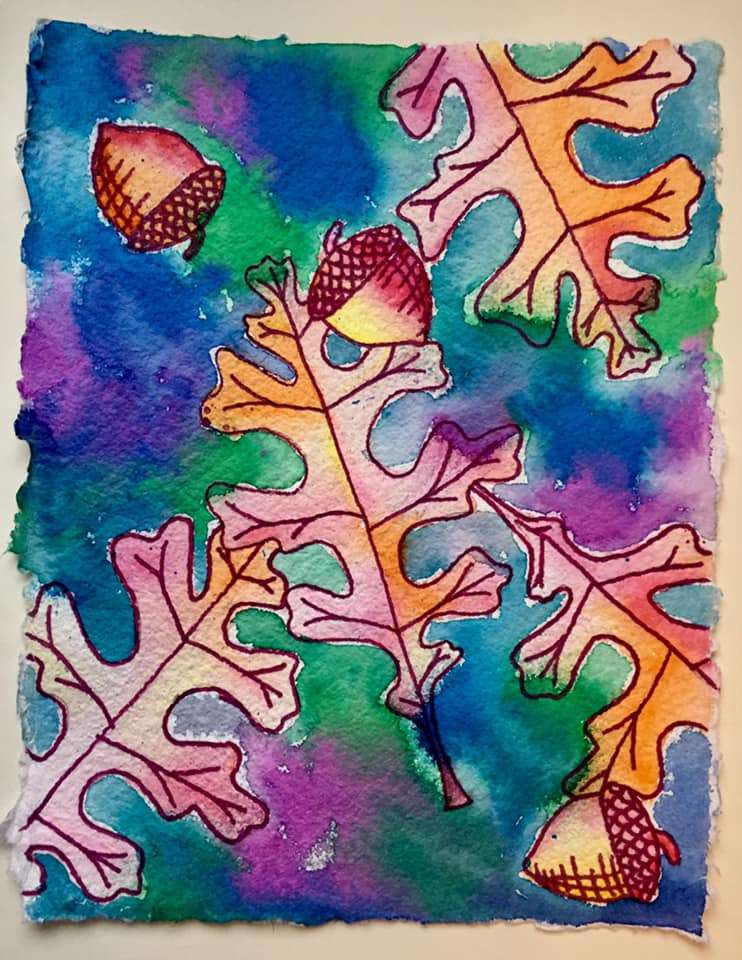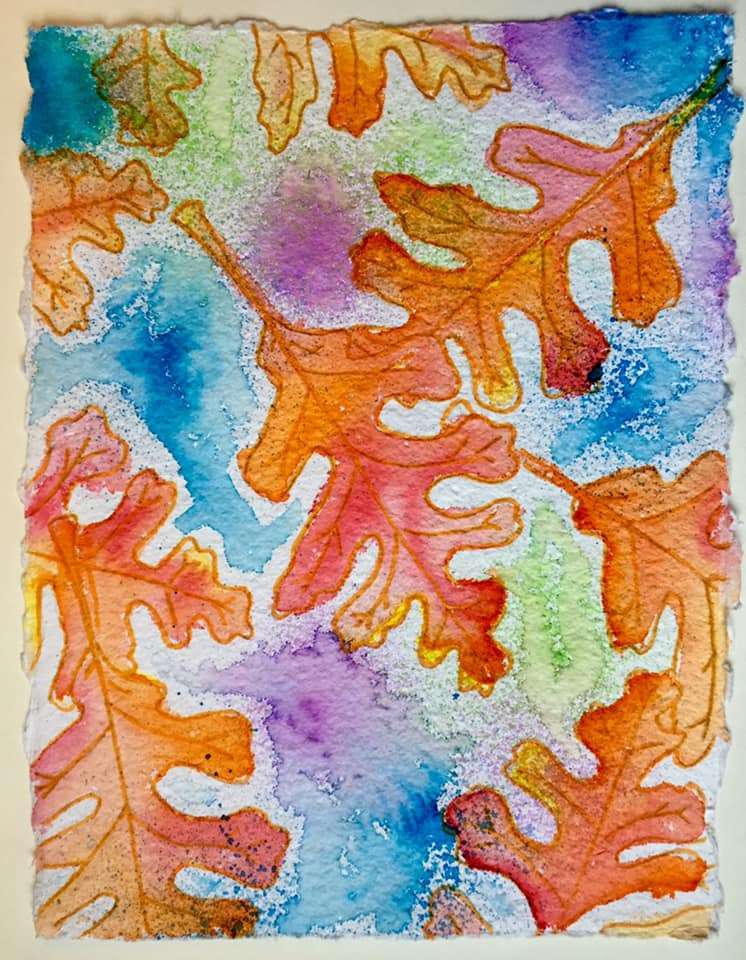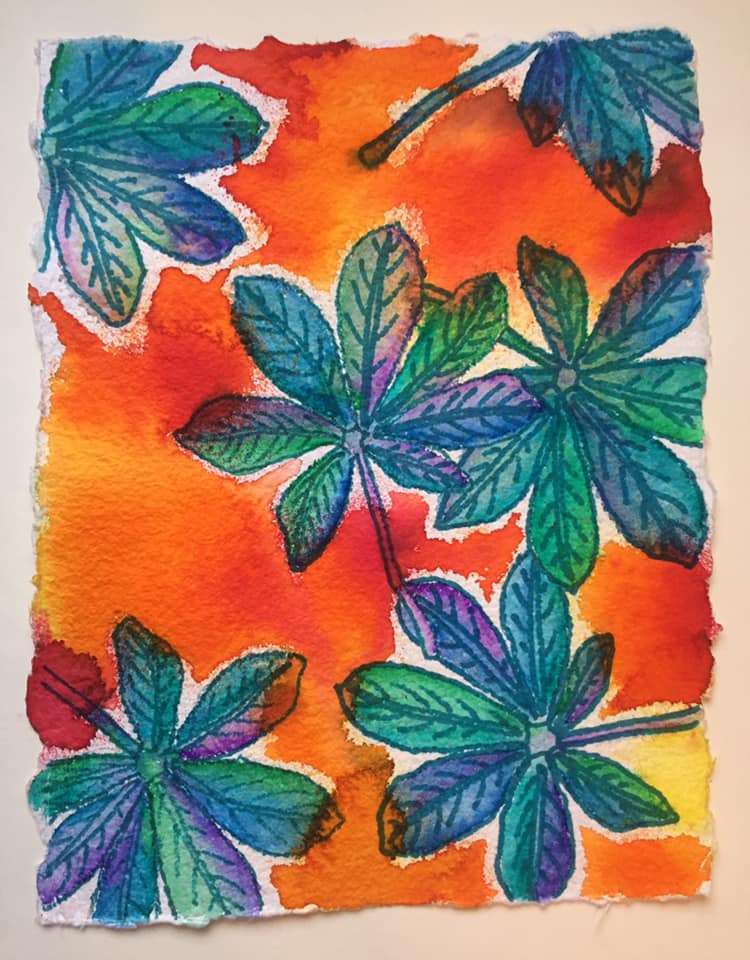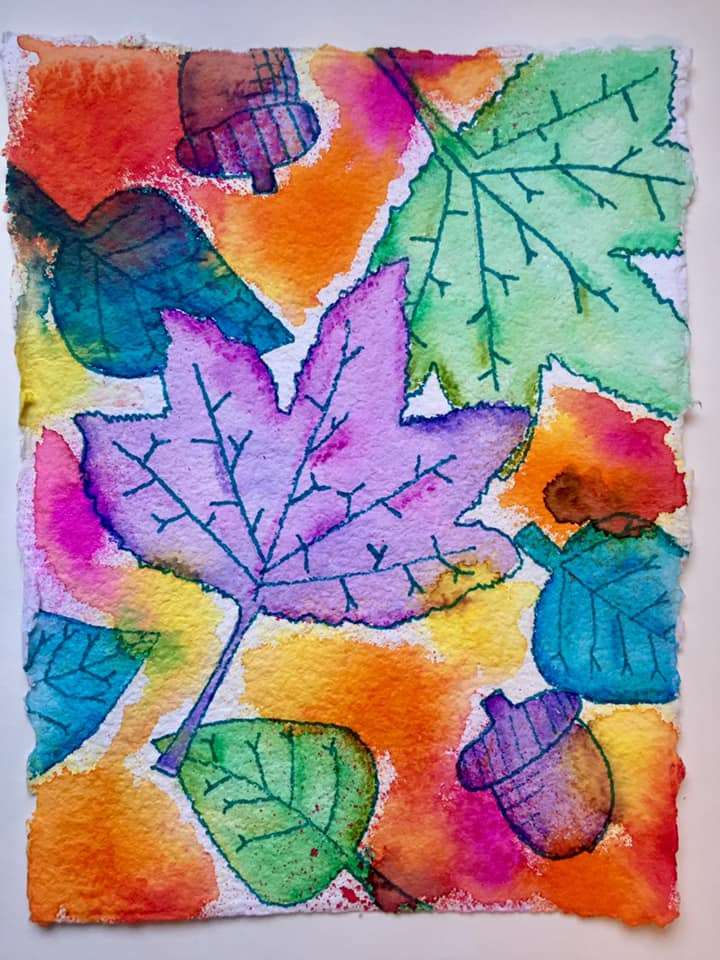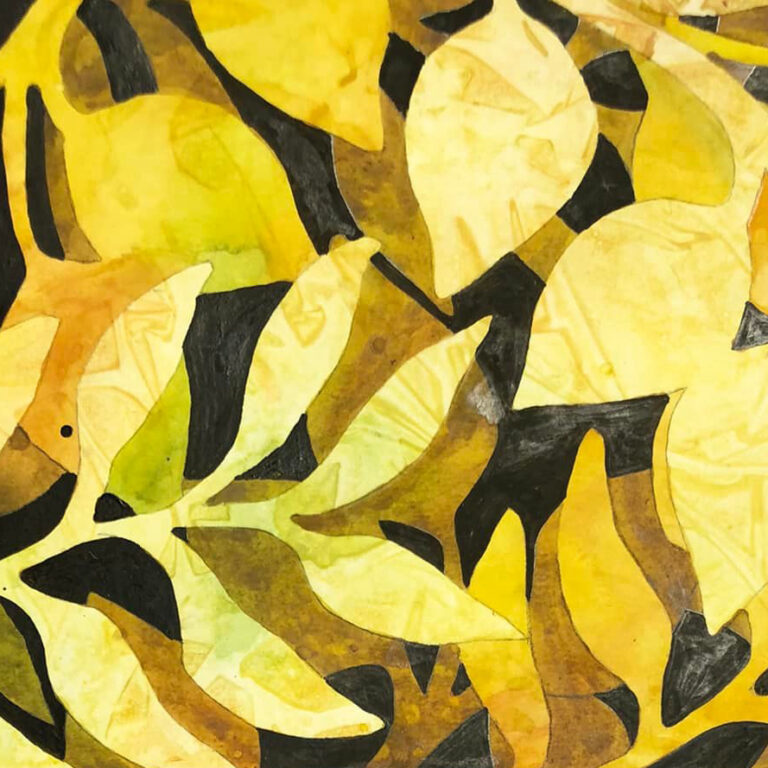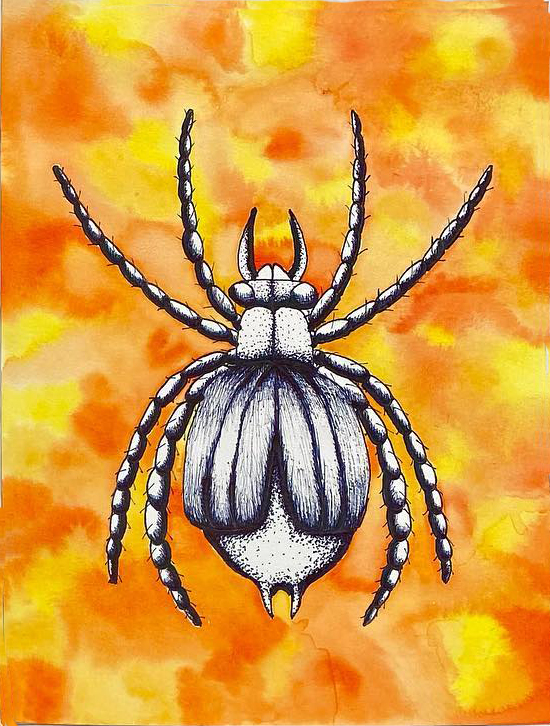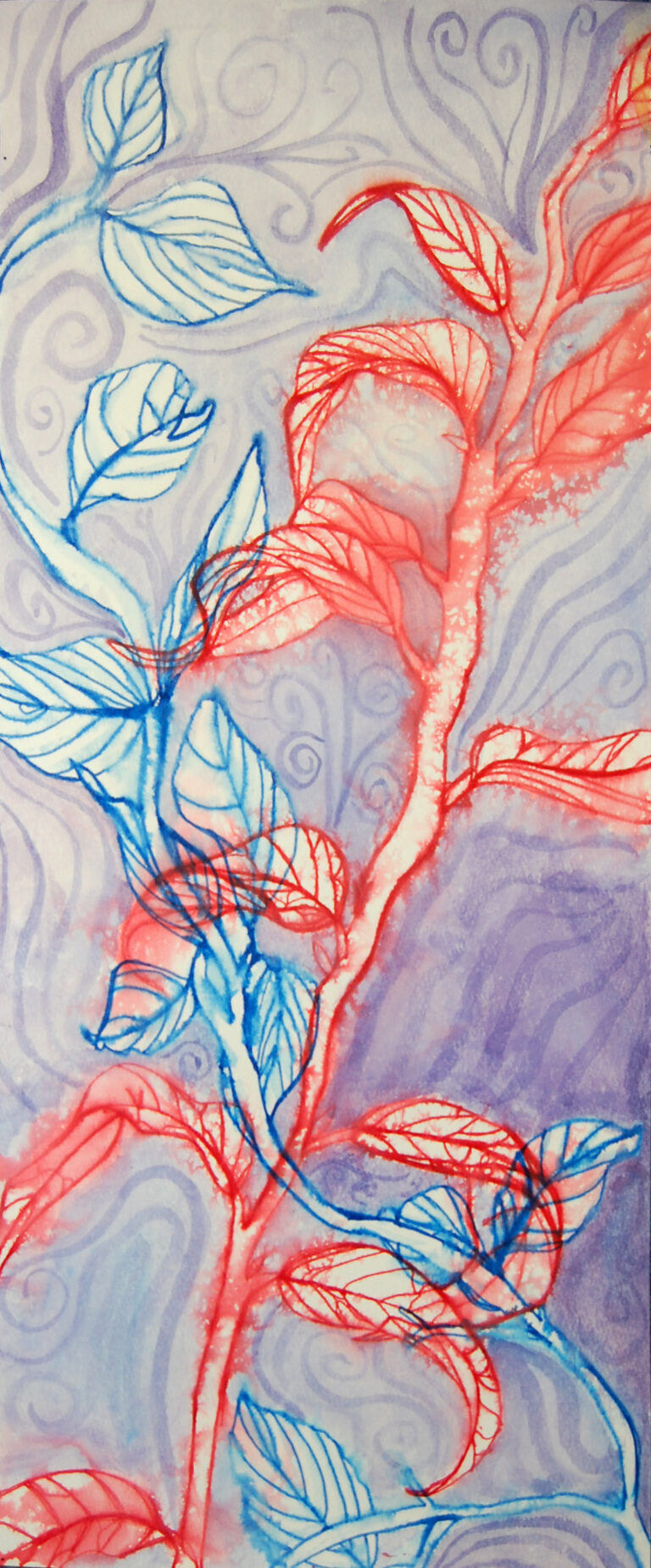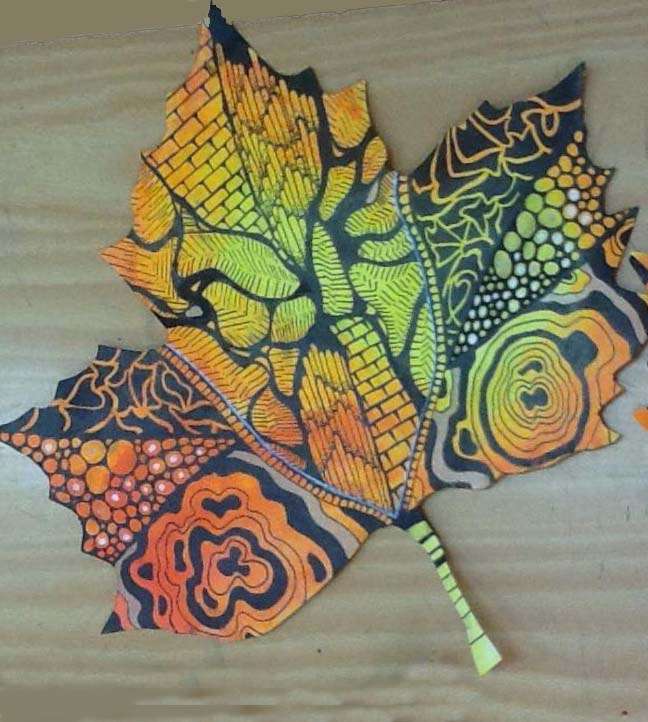Grade Level
Duration
5-6 periods, 47 minute periods
Materials
watercolor paper (the author used Shizen Design Punjab Watercolor Paper, 9 x 12 Inches, 140 lb, White, 25 Sheets sold by School Specialty), light table, (or window), pencil, basic drawing paper, colored and black sharpies, brushes, liquid watercolor paint
Media
Mixed media
Lesson Objectives
For the student to…
carefully observe and draw reference pictures with attention to detail.
draw light at all times.
follow compositional techniques to create a pleasing and interesting composition that is not overly busy.
understand warm and cool colors and use them in painting your leaves.
display good craftsmanship and an understanding of wet and dry applications of watercolor when painting the leaves and background, e.g., control the paint flow so you stay within the boundaries when working on a leaf.
Introductory Activity
The teacher should introduce warm and cool colors using a color wheel.
The teacher should provide reference materials of leaves, flowers, acorns, pinecones, etc. for students to draw from. In this instance, the teacher felt using images that were 2D helped students draw realistically and increases successful outcomes. Drawing from life could be an extra challenge a teacher might consider.
On white drawing paper, the students will use PENCIL to draw a leaf, flower, or other natural objects as realistically as they can.
Students will then check in with their teacher and then use a black Sharpie over their favorite drawing carefully. This will help the drawing be visible when tracing in the next step.
Lesson Process
On a new piece of watercolor paper, students should use a pencil and a light table, (or window) to repeatedly trace their drawing several times. Encourage students to try turning or flipping their original drawing to create a variety of positions for their tracings. Students will create at least TWO areas of realistic overlap and have tracings touch or go off all sides. Warn students not to “overfill” the paper to the point where things get confusing. Work neatly! Check-in with your teacher after this step is complete. At all times, remind students to draw light and use an eraser if needed to lighten up pencil lines.
Next, students choose either a WARM or COOL color scheme for their leaves/objects. Choose one or more Sharpies in your chosen color scheme and neatly trace over your composition.
Students will then choose at least three Crayola Markers in their chosen warm or cool color scheme.
Students will emphasize outlines and interior details with the markers, switching colors frequently so that each leaf/object has a minimum of two colors. DON’T color anything in solid, just accent existing lines neatly. NOTE: Don’t worry if the marker lines look “rough” or sketchy.
Students will now use liquid watercolors in spray bottles to create a cool splatter effect in the negative space in the artwork.
Students will use water to neatly but thoroughly wet all their remaining white areas. Encourage students to try to leave a small dry space around all your leaf/objects. DO THIS STEP QUICKLY BUT CAREFULLY: you want students to be consistent about how close they get to each object.
Students will choose colors that are the OPPOSITE color scheme of your leaf/objects, mist the background areas. It is ok, and even desirable, for the spray to also hit your leaves/objects a little!
Where the paper is WET, the color will bleed. Where the paper is DRY, the color will be splattered.
Vocabulary
composition, negative space, watercolor, warm colors, cool colors. line, wet on wet, wet on dryResources
Mixed Media Nature Drawing slide show by Ursina Amsler

